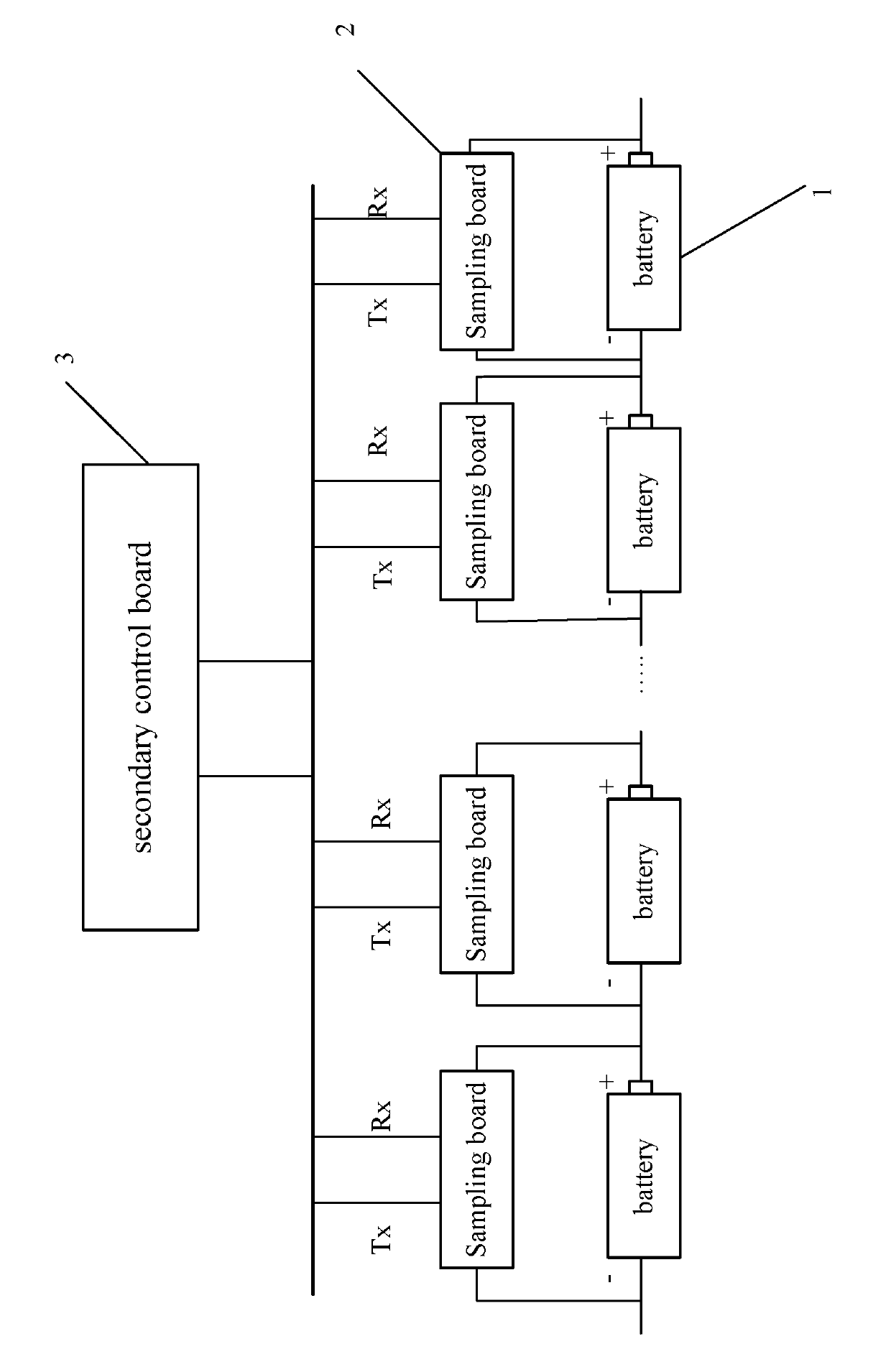Bus-based information collection system with micro power consumption for battery packages
a technology of information collection system and battery package, which is applied in the direction of instruments, liquid/fluent solid measurement, transportation and packaging, etc., can solve the problems of untrustworthy data obtained by sampling module, increased wire amount, and increased required size of battery box
- Summary
- Abstract
- Description
- Claims
- Application Information
AI Technical Summary
Benefits of technology
Problems solved by technology
Method used
Image
Examples
Embodiment Construction
[0023]The disclosure is described in connection with specific embodiments, but the disclosure is not limited to these embodiments. Those skilled in the art should be aware that the present disclosure encompasses all alternatives, modifications and equivalents that may be included within the scope of the claims.
[0024]Referring to FIG. 1, a battery information collection system of a bus micro-power consumption for battery packages includes a plurality of batteries 1 connected in series, each of the batteries 1 is connected to a separate sampling board 2 and is sampled by the separate sampling board to provide information, every sampling board 2 is mounted near a corresponding battery and is connected to a communication bus 4 arranged nearby, and said communication bus 4 is connected to a secondary control board 3 used for data summarization. In this embodiment, each of the batteries 1 corresponds to a sampling board 2 provided nearby, each of the sampling boards 2 is proximally connec...
PUM
 Login to View More
Login to View More Abstract
Description
Claims
Application Information
 Login to View More
Login to View More - R&D
- Intellectual Property
- Life Sciences
- Materials
- Tech Scout
- Unparalleled Data Quality
- Higher Quality Content
- 60% Fewer Hallucinations
Browse by: Latest US Patents, China's latest patents, Technical Efficacy Thesaurus, Application Domain, Technology Topic, Popular Technical Reports.
© 2025 PatSnap. All rights reserved.Legal|Privacy policy|Modern Slavery Act Transparency Statement|Sitemap|About US| Contact US: help@patsnap.com

